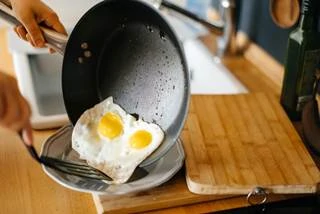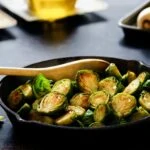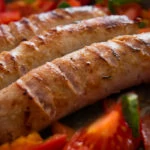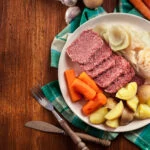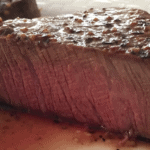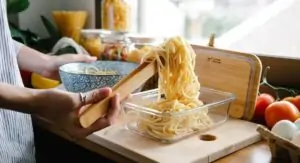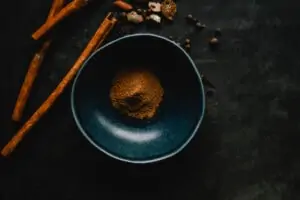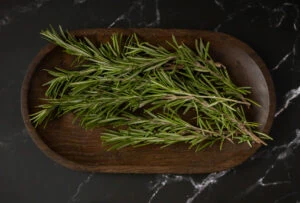Many people around the world enjoy eating eggs every day. Unfortunately, not many of them know how to keep eggs from sticking to pan. It’s easy to assume that the simplest solution to this problem is to use a nonstick pan, but even then, the results aren’t always guaranteed. Moreover, what happens when you don’t have access to a nonstick pan?
The only logical solution here is to have a method of cooking eggs that works with any kind of cooking apparatus, nonstick or not.
So, how do you keep eggs from sticking to pan? Here are some tricks that can help.
NOTE: If you crack eggs directly onto a heated surface without first curing that surface, the eggs will burn and stick.
Step 1: Warm Up the Frying Pan
Let’s assume that you don’t have a nonstick pan handy or are out camping and using a cast-iron skillet instead. Regardless of whatever surface you may use for cooking the eggs, you must warm it up before introducing the eggs.
Start by placing the pan over gentle heat instead of a red hot cooking surface. The idea is to gradually let the pan warm up instead of heating it rapidly, leading to a burnt pan and an acrid smell.
Step 2: Add Butter or Oil
Give the pan a few seconds to heat before adding the oil or butter. How long you let the pan heat up before adding butter or oil will depend on your choice of pan. However, the general rule of thumb is to use medium-high heat for about 10–15 seconds before adding butter or oil.
If you are using butter, give it enough time to heat up until it starts forming bubbles, then swirl it around the pan so that it covers the entire surface with an even coat.
The same principle applies when you are using oil. Allow it to heat up until it thins and becomes thoroughly liquefied. It’s also advisable to have the oil cover the entire cooking surface of the frying pan but do not spread it by stirring it. This might break up the texture and could very likely leave some of the pan’s surface without the necessary oil coating. The idea is to gently swirl the oil around to cover the entire surface.
Step 3: Add the Eggs
Once you are satisfied that the pan’s entire surface is coated with butter or oil, it’s time to add the eggs. Gently introduce the eggs to the cooking surface and allow them to cook for around 30 seconds. Once the eggs have developed a bit of a lighter colored ring around the edges, gently run a spatula around the edges of the pan to ensure that the eggs aren’t sticking to the surface.
What Not to Do When Cooking Eggs
Now that we have covered how to keep eggs from sticking to a pan, here are some tips on what not to do if you want to cook excellent eggs.
Don’t Overcook Them
This is yet another way to get burnt eggs stuck in your frying pan. Eggs tend to overcook quite easily. Within a matter of seconds, they can become tough, rubbery, and begin to stick to your pan again. You need to learn how to time it just right and use a good cooking spray.
You need to keep an eye out when cooking your eggs. If you whisked them before introducing them to the pan, use your spatula to check if they are cooked to your liking. If, however, you are a sunny-side-up kind of person, you need to employ extra care as egg whites cook marginally faster than the egg yolk.
Once the egg whites begin setting, the yolk will still be slightly oozy. If that’s what you like, then you are good to go. However, if you like your eggs thoroughly cooked like you would when making perfect scrambled eggs, you need to give the yolk some more time. Reduce the heat and give it a few more seconds to cook.
Don’t Use a Cold Pan
The instructions above say that you should heat your pan first, then introduce butter or oil before introducing the eggs. While these steps are easy enough to follow for a fried egg, knowing when your pan is hot enough is important.
In some cases, you might add your eggs to the pan, assuming it’s hot enough because it melted the butter, but this might not be the case. So, how do you know when your pan is not just hot enough to melt the butter but also hot enough for the eggs? Add a bit of water.
Only a drop of water will do. If the water drop sizzles as soon as it comes into contact with the butter or oil, the pan is hot and ready for the eggs. Don’t be tempted to increase the heat during this process; that will only lead to undesirable results like a burnt pan.
From here on, it’s just a matter of personal preference and how you like your eggs done. If you are cooking an omelette flip the eggs over so that both sides are evenly cooked to your liking.

